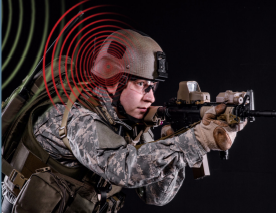Boston Engineering Corp. copied nature for its AUV.
The BIOSwimmer applies the dynamics of fish—a tuna, to be precise—for operation in constricted areas inaccessible by other vehicles.
Boston Engineering Corp. copied nature for its AUV. The BIOSwimmer applies the dynamics of fish—a tuna, to be precise—for operation in constricted areas inaccessible by other vehicles. Developed for the U.S. Department of Homeland Security, the device can inspect a vessel’s exterior for illicit cargo and contraband, as well as harbor facilities for unwanted activity.
“If you look at standard AUVs, you can see that they’re pretty rigid throughout the entire body,” says Mike Rufo, vice president of research and development at Boston Engineering. “We leveraged biology—there are no torpedo-shaped fish out there—to figure out what we would need for getting into tight areas that another design with a larger turn radius couldn’t get into.”
The unique design also improves maneuverability and improves hydrodynamics, reducing the power requirements needed to keep pace with a moving vessel.
“One of the other things biological systems provide is what we call a transient response, which is the ability to shift directions and speeds very quickly,” explains Rufo. “If you can leverage how efficient biological shapes are in the water, you can operate more efficiently and do it for a longer period of time.”
The BIOSwimmer has an aluminum chassis, a foam exterior and aluminum pressure vessels inside to hold the electronics that power the autonomous systems and provide the desired depth rating. It uses a flooded system where water passes freely through the vehicle, plus a modular design.
“We can make the individual modules themselves larger, or we can extend the frame so that you can add additional modules in there if you wanted to add a new sensor or more batteries,” says Michael Conry, a mechanical engineer at Boston Engineering who worked on the project.
“There’s a big push in underwater space for increased autonomy,” adds Conry. “Our vehicles are set up to integrate with other autonomous solutions to provide increased autonomy moving forward.”
Original Story written by Nathan Eddy
To read the complete article in Assembly Magazine, click here.













